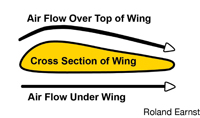
One of the major arguments for the existence of God is the incredible
intelligence designed into everything we see in the world around us.
Those who dispute this kind of evidence generally have two objections.
The first is that pain, suffering, tragedy, violence, etc., seem to be
failures in design at best or malicious use of design at the worst. We
have talked about that objection in this journal in the past pointing
out that those who make this complaint assume there is no purpose in
our existence and that the role of free will is not considered in such
views.
The second objection to evidence for design and purpose in the creation
is that it is not so well designed and that arguing for a designer is
really just a God-of-the-gaps argument. They insist that the gaps in
our knowledge will eventually be filled as new discoveries are made
which explain how the apparent design features happened. In other
words, when the gaps are filled, God will not be needed. There are many
weaknesses in this view, but the main problem is it assumes that if I
understand how something works this somehow proves that God had nothing
to do with it.
An example of incredible design which we now understand pretty well is
how birds fly. In the early days of human history, anything that flew
was viewed as miraculous in nature. Clouds seemed to be like birds in
many ways, but you could kill a bird and it would not fly and you could
not do that to a cloud. People observed that things like dandelion
seeds seemed to fly at the whim of the winds, but obviously birds were
not like that either.
The ancient Greek scientist Archimedes (c. 287 – 212 B.C.)
discovered
a
scientific principle which helped explain much of the
mystery. Archimedes discovered a cause and effect principle which is
usually stated like this: “Any object placed in a fluid is buoyed up by
a force equal to the weight of the fluid displaced.” Suppose you weigh
100 pounds and you jump into a bathtub full of water and cause 25
pounds of water to be spilled on the floor. If you could weigh yourself
in the water you would weigh 75 pounds. If your body could displace 125
pounds of water you would float, actually displacing only the 100
pounds necessary to offset your weight. Air has weight. If a hot air
balloon floats in the air and if the balloon, basket, and passenger
weigh 1,000 pounds, that means the balloon has displaced 1,000 pounds
of air. Clouds float because they too displace air. The air gets
thinner as you go up, so there is a limit as to how high a cloud will
go. Dandelion seeds are close to the density of air, so they too have
enough buoyant force to be airborne. Birds are not less dense than air,
so the mystery of how birds fly was delayed until 1738 when Daniel
Bernoulli discovered another important law of physics.
 Take two books that are about the same size and place
them side by side one inch apart on a table. Lay a piece of thin paper
across the top of the books so you have a tunnel. Blow through the
tunnel. What does the paper do? The paper collapses into the tunnel.
Bernoulli’s principle says that when a fluid moves rapidly in one
direction, it exerts minimum pressure at right angles to the direction
it is moving. A bird’s wing is shaped to take advantage of Bernoulli’s
law. Along the top of the wing the distance is greater than along the
bottom, so the air has to move faster generating a lower pressure on
top of the wing. The higher pressure under the wing lifts the wing, and
the bird.
Take two books that are about the same size and place
them side by side one inch apart on a table. Lay a piece of thin paper
across the top of the books so you have a tunnel. Blow through the
tunnel. What does the paper do? The paper collapses into the tunnel.
Bernoulli’s principle says that when a fluid moves rapidly in one
direction, it exerts minimum pressure at right angles to the direction
it is moving. A bird’s wing is shaped to take advantage of Bernoulli’s
law. Along the top of the wing the distance is greater than along the
bottom, so the air has to move faster generating a lower pressure on
top of the wing. The higher pressure under the wing lifts the wing, and
the bird.
In simplified terms, we now know how birds fly. The principles
discovered by Archimedes and Bernoulli also explain how jelly fish
float, how flying fish fly, and a variety of other things that were
once mysteries.
Romans
1:19 – 20 tells us that we can know there is a God “through the
things he has made.” These laws are designed in such a way that it took
mankind centuries to understand them. They are specially suited for the
materials and agents operational on the earth. They are not a chance
process of some physical action on unprepared materials. Every law of
physics and chemistry that exists makes the earth uniquely suited for
life. It is difficult to propose a workable chance explanation of how
life could come into existence. It is also difficult to explain how
life could have evolved by chance processes to successfully function in
the physical world. To explain both of these things by chance is
virtually impossible.
Back
to Contents
Does God Exist?, NovDec10.


 Take two books that are about the same size and place
them side by side one inch apart on a table. Lay a piece of thin paper
across the top of the books so you have a tunnel. Blow through the
tunnel. What does the paper do? The paper collapses into the tunnel.
Bernoulli’s principle says that when a fluid moves rapidly in one
direction, it exerts minimum pressure at right angles to the direction
it is moving. A bird’s wing is shaped to take advantage of Bernoulli’s
law. Along the top of the wing the distance is greater than along the
bottom, so the air has to move faster generating a lower pressure on
top of the wing. The higher pressure under the wing lifts the wing, and
the bird.
Take two books that are about the same size and place
them side by side one inch apart on a table. Lay a piece of thin paper
across the top of the books so you have a tunnel. Blow through the
tunnel. What does the paper do? The paper collapses into the tunnel.
Bernoulli’s principle says that when a fluid moves rapidly in one
direction, it exerts minimum pressure at right angles to the direction
it is moving. A bird’s wing is shaped to take advantage of Bernoulli’s
law. Along the top of the wing the distance is greater than along the
bottom, so the air has to move faster generating a lower pressure on
top of the wing. The higher pressure under the wing lifts the wing, and
the bird.